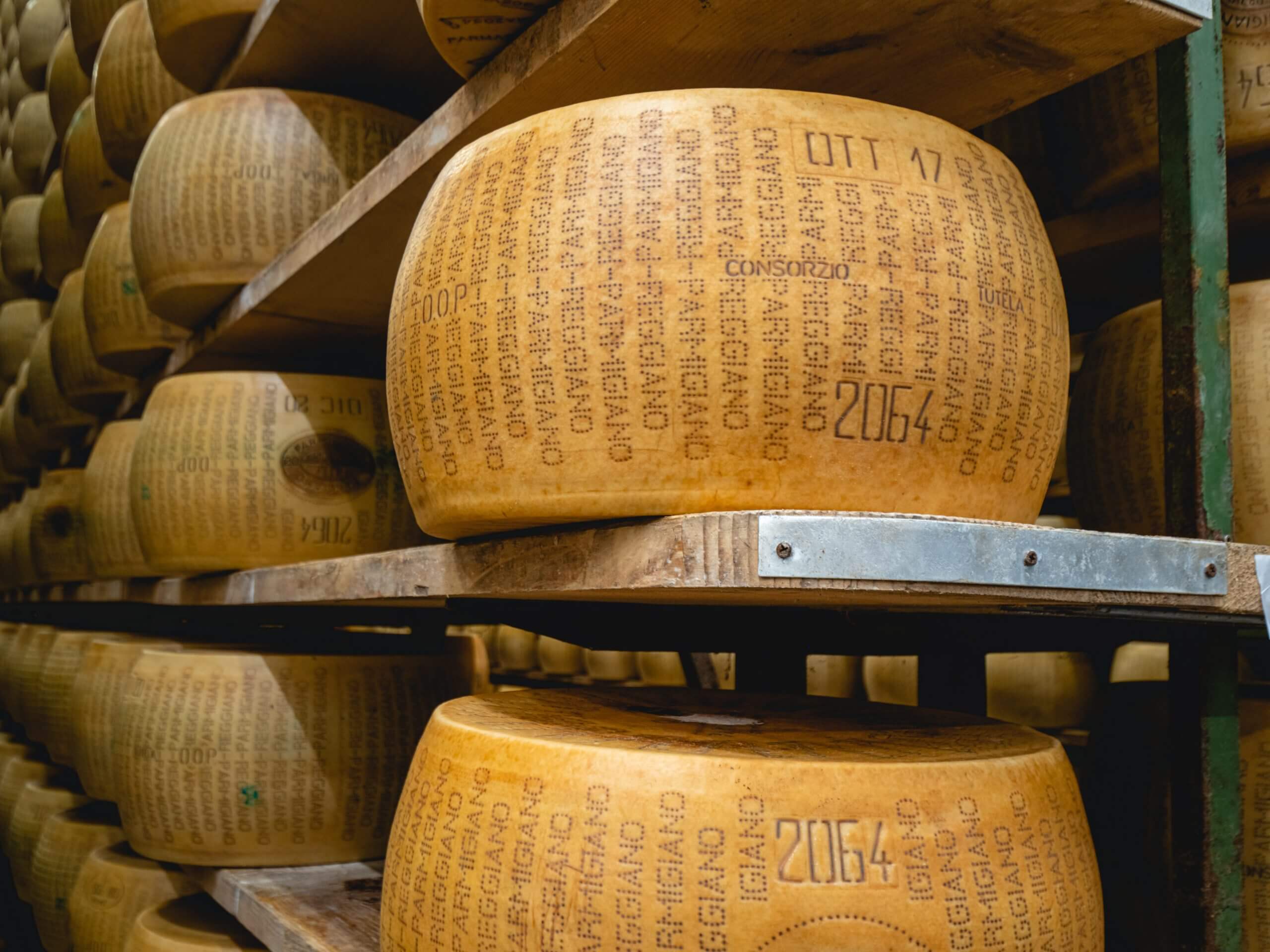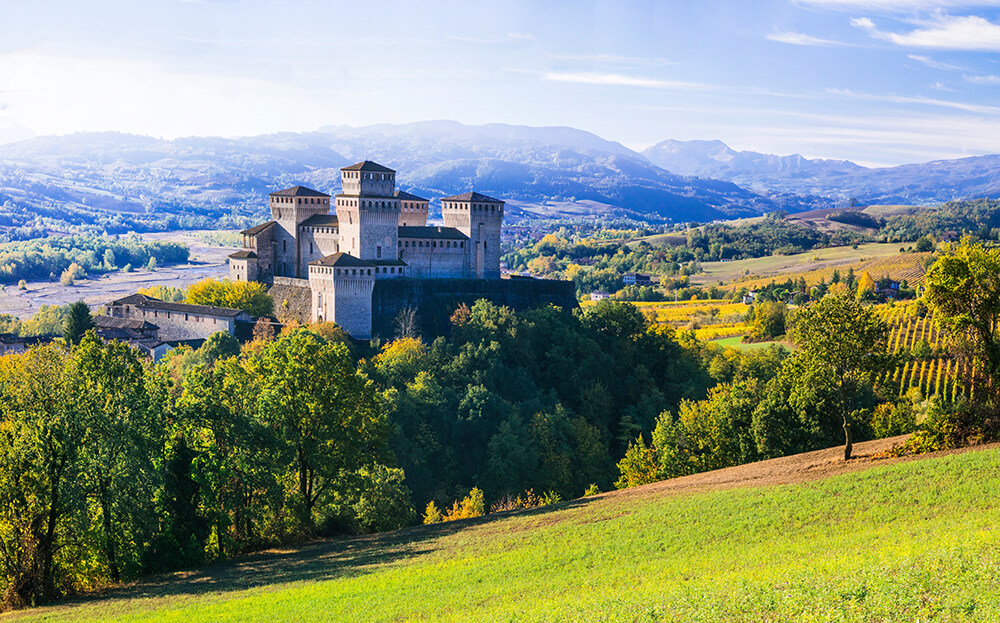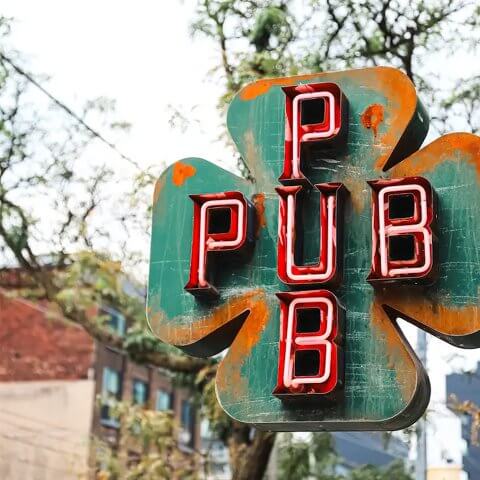The Italian art of Parmigiano Reggiano cheesemaking has existed for centuries. When we were invited last fall to visit Parma – where the Parmigiano Reggiano Cheese Consortium is headquartered – we were immediately intrigued. The Consortium oversees the Parmigiano Reggiano industry and tightly monitors the product, so to be hosted by them was an honour we couldn’t pass up.
Off we went to Northern Italy – the Emilia-Romagna region, to be specific. Parmigiano Reggiano, like Champagne, is what’s called a Protected Designation of Origin (PDO) product. To be authentic, it must be produced within a designated geographical area using approved methods and ingredients. As of February 2023, there are around 300 dairies where authentic Parmigiano Reggiano is made under the careful watch of the Consortium. Parmesan cheese is essentially an unregulated version that can be produced anywhere – if Parmigiano Reggiano is Champagne, Parmesan is sparkling wine.
The mark of authenticity is the Consortium’s seal, stamped into the cheese rinds as they are molded and then hot-iron branded upon approval by official inspectors. Of course, most home cooks don’t buy their cheese by the wheel, so the packaging must indicate its origins as well. In North American grocery stores, you’ll know you’re buying authentic Parmigiano Reggiano if the package bears the red-and-yellow PDO seal and the Consortium’s black-and-gold seal.
So, what does it take to get those stamps? It’s a long path to ‘certified’ status, as we soon saw firsthand.

Parmigiano Reggiano: The process
It starts with the cows, who must be fed with locally-grown fodder – this is how the unique terroir of the region is imparted into the product. Over 1000 litres of milk is produced between an evening and morning milking, then combined with a whey starter and rennet, which comes from cows’ stomachs and works with the whey to coagulate the mixture.
The curd that forms is broken down into small granules with a traditional tool known as a spino – think huge, two-handed whisk. The cheesemaker will begin to add heat until the granules sink down to the bottom of the vat and form a mass weighing over 200 pounds. With the help of an assistant, the cheesemaker lifts out the mass and cuts it into two halves, known as ‘twins.’
The twins are wrapped in linen cloth and placed in a wraparound mold called a fascera. This is when the first stamp is added – the dotted “Parmigiano Reggiano” insignia, a registration number and production date is on a stencil on the inside of the fascera band, and the inscription continues to be pressed into the rind throughout the rest of the cheesemaking process.
After a few days, the wheels are immersed in a salt solution, which enriches the flavour of the cheese and hardens the rind. Then the waiting begins: Authentic Parmigiano Reggiano is aged for a minimum of 12 months, upon which point the Consortium’s cheese regulators will conduct an auditory inspection by tapping the exterior of each wheel with a hammer to listen closely for irregularities. Wheels that don’t pass the inspection are stripped of their markings and either sold under a different name or shredded. The wheels that are approved get branded with the Consortium’s seal. If required, Parmigiano Reggiano can be aged further, up to 40 months. The longer the cheese ages, the more granular the texture and sharper the taste.
Parmigiano Reggiano: How to store it
You can buy authentic Parmigiano Reggiano all across North America, from Los Angeles to Edmonton to Halifax – if it has the seals, though, it all comes from one of those 300 dairies nestled among the rolling plains and gentle hills of Northern Italy. It’s a precious resource, so store it accordingly: here’s some advice from the Consortium experts on how to store it.
When you buy a piece of Parmigiano Reggiano freshly cut or when you take it out of the vacuum-pack, it must be stored in the refrigerator at a temperature ranging from 4 to 8°C. Parmigiano Reggiano keeps its organoleptic features unchanged if stored:
- at an optimal humidity level
- far from other food (the fatty part of cheese tends to absorb other smells present in the refrigerator)
It is therefore advisable to keep it in glass or plastic containers.
Another practical solution consists in wrapping Parmigiano Reggiano in food-grade plastic film.
In this way Parmigiano Reggiano can be kept for a long time making sure periodically that its conditions do not change.
It is advisable never to freeze cheese.
















